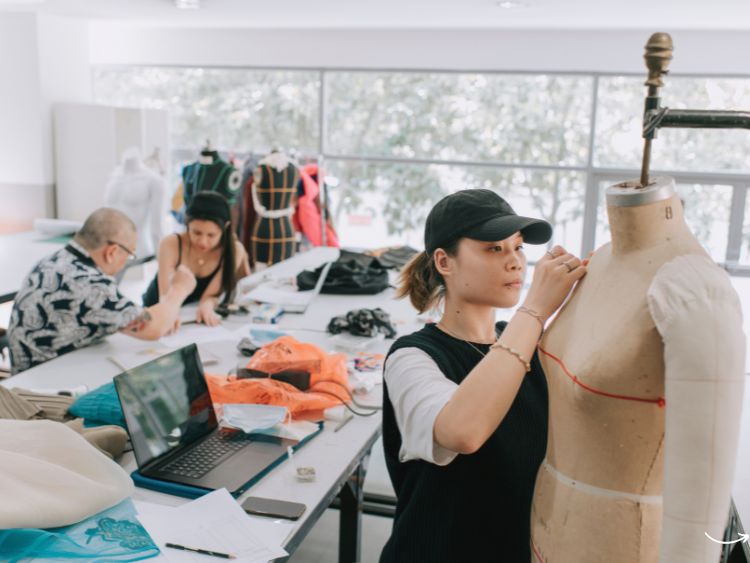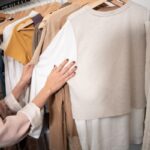Fashion design isn’t just about clothing; it’s an art form where creativity takes center stage. Every designer has a unique way of expressing ideas, but one tool remains indispensable across the board—the fashion design sketchbook. Whether you’re a seasoned designer or a budding fashionista, your sketchbook can be the most powerful tool in your creative arsenal.
In this guide, we’ll dive into the world of fashion design sketchbooks, exploring their importance, how to craft one that reflects your vision, and tips for making it a standout. Plus, we’ll tackle some frequently asked questions, giving you the ultimate roadmap to starting or refining your fashion design sketchbook journey.
Why a Fashion Design Sketchbook Matters
Your sketchbook is like your personal fashion diary. It’s where you can experiment with new ideas, explore fresh trends, and capture fleeting inspirations before they disappear. Here’s why it’s a game-changer:
- Creativity Unleashed: A safe space to explore wild ideas and bold patterns.
- Refined Concepts: Translate raw concepts into polished designs.
- Evolution of Style: Track your progress and witness your design style evolve over time.
- Pitch Perfect: Showcase your concepts to potential clients, employers, or collaborators.
How to Craft a Winning Fashion Design Sketchbook
1. Choose Your Canvas
Selecting the Right Sketchbook: Opt for a book that feels comfortable. Whether it’s a spiral-bound sketchbook, hardcover journal, or loose-leaf binder, make sure it suits your style. Consider paper type, size, and binding:
- Paper Quality: Thicker paper (like 100-160 gsm) is ideal for watercolors and markers.
- Size Matters: Small sketchbooks are portable, while larger ones offer more creative real estate.
- Binding Preference: Spiral-bound allows for easy page-turning, but stitched binding is more durable.
2. Organize Your Ideas
Create a Concept Section: Start with a mood board or a dedicated space where you brainstorm ideas and gather visual inspiration. Include:
- Color Swatches: Different shades you plan to use.
- Fabric Samples: Texture and patterns that complement your design.
- Reference Images: Photos, magazine cutouts, or digital prints.
3. Sketch It Out
Basic Silhouettes: Draw a collection of croquis (basic figures) to outline your designs. Vary the poses to showcase different angles.
- Classic Croquis: Straight-standing poses for foundational sketches.
- Dynamic Poses: Experiment with movement to bring your designs to life.
Add Details: Focus on embellishments, fabric draping, and garment construction to bring depth to your sketches.
- Accessories: Shoes, bags, hats, and jewelry that complete the outfit.
- Technical Drawings: Include close-ups or technical sketches to detail construction.
4. Experiment with Mediums
Diversify Your Tools: Pencils, markers, watercolors, and even digital sketching can breathe life into your designs. Here’s a quick list:
- Colored Pencils: Ideal for shading and detailed work.
- Markers: Vibrant hues for quick sketches.
- Watercolors: Create soft textures and blend colors effortlessly.
- Digital Tools: Use apps like Procreate or Adobe Fresco for precise and editable sketches.
5. Develop Collections
Themed Collections: Create groups of designs based on a specific theme or concept. Examples include:
- Seasonal Themes: Spring/Summer or Fall/Winter collections.
- Event-Based: Evening wear, bridal, or vacation styles.
- Inspiration-Driven: A collection based on cultural motifs, art movements, or historical eras.
6. Document Your Process
Annotate Your Sketches: Jot down thoughts, ideas, and design intentions next to your sketches. You can include:
- Fabric Information: Types, textures, and drape of fabrics.
- Styling Notes: How the garment is meant to be styled or worn.
- Pattern Drafts: Include patterns or instructions if available.
7. Add Final Touches
Cover and Index: Design a cover page that reflects your style and include an index for easy navigation.
- Table of Contents: Organize sections like mood boards, sketches, and collections.
- Personal Touch: Add a unique logo, signature, or watermark.
FAQs About Fashion Design Sketchbooks
Q1: What should a beginner include in a fashion design sketchbook?
A beginner’s sketchbook should focus on basic croquis sketches, fabric swatches, color palettes, and simple garment designs. Over time, you can expand to include mood boards, technical sketches, and annotations.
Q2: How can I improve my fashion illustration skills?
- Practice Regularly: Daily sketching helps improve precision.
- Study Anatomy: Understanding human anatomy aids in drawing realistic poses.
- Explore Techniques: Experiment with shading, textures, and various art mediums.
- Get Feedback: Share your work with peers or mentors for constructive criticism.
Q3: Is it essential to have a theme for each collection?
Not necessarily, but having a theme provides direction and cohesion to your collection, helping your designs tell a unified story.
Q4: Should I include failed designs or rough sketches in my sketchbook?
Absolutely! A fashion design sketchbook should document your creative journey, including rough sketches, experiments, and ideas that didn’t pan out. They reveal your creative process and how you’ve grown.
Q5: What digital tools can help enhance my fashion design sketchbook?
- Procreate: An intuitive digital drawing app for iPads.
- Adobe Illustrator: Great for precise technical sketches and vector illustrations.
- CLO 3D: Ideal for realistic 3D garment simulations.
Q6: How do I present my sketchbook to potential employers or clients?
- Organize Logically: Make sure your sketchbook flows and is easy to follow.
- Include Annotations: Provide insights into your creative process.
- Highlight Best Work: Showcase your strongest designs prominently.
Conclusion
Creating a fashion design sketchbook is a deeply personal journey that allows you to explore and express your unique vision. It’s a dynamic blend of art, creativity, and technical skill. Whether you’re sketching the basics or developing intricate collections, your sketchbook should be a playground of ideas that fuels your passion for fashion.
So grab your pens, pencils, markers, or digital tablet, and unleash your creativity in your fashion design sketchbook. Whether it’s your first page or your hundredth, let each sketch be a testament to your artistic journey. Happy designing!



